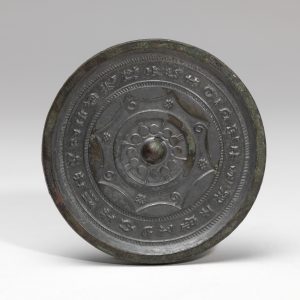The collection of Major and Mrs. Oliver J. Todd was gifted to the museum in honor of their daughter, Smith alumna Doris Todd Brown (Class of 1949), in 1965-67 following the gift of the Hart Collection. This original group of 41 pieces of ancient Chinese bronze was augmented by a donation of an additional 57 pieces from Doris Todd Brown in 2017.The Todd Collection was formed in a way different from that of the Hart Collection as its pieces were collected during the Todd family’s stay in China starting from 1919.
For 20 years, Major Todd built motor roads in China for the American Red Cross and for 12 of those years, served as the chief engineer of the International Famine Relief mission. Three different times he led the construction team that prevented the Yellow River from overflowing its banks. It was during his stay in China that he met Mrs. Todd who was working as a medical missionary. Major Todd and Mrs. Todd started to collect Chinese bronze after they married in 1927 and, in 1935, Major Todd published a book on their collection of bronze mirrors. The book was co-written with Milan Repert and called “Chinese Bronze Mirrors, Group of Archaic Bronze Objects and Weapons: A Study Based on the Todd Collection of 1000 Bronze Mirrors, Group of Archaic Bronze Objects and Weapons found in the five northern provinces of Suiyuan, Shensi, Honan and Hopei, China.” The original edition was printed by San Yu Press, Shanghai in 1935, and it was reprinted by Paragon Books, New York in 1966. Major Todd and Mrs Todd’s daughter, Doris Todd Brown also wrote about her childhood in China with her family, which could be found here: http://www.billhusler.com/Private/Bill’s%20Family/ps05/ps05_419.html.
The provenance of the Todd Collection demonstrates another means of collecting Chinese art on site. While the Todds were working in China, many other collectors of Chinese art during this period, most notably Charles Lang Freer, one of the most renowned American collectors of East Asian art in the 20th century, would also visit and travel through China to discover collectibles themselves. While technically there were not many restrictions on exporting ancient Chinese objects from China during the early 20th century, such loose regulations were largely influenced by the social upheaval, political instability, and constant warfares in China during this period, which prevented China from properly safeguarding its cultural properties. The Todds, like many foreign collectors at this time, took advantage of their presence in China, carefully assembled, studied and published their collections, which now serve as the foundation for Chinese art in many museums overseas.
